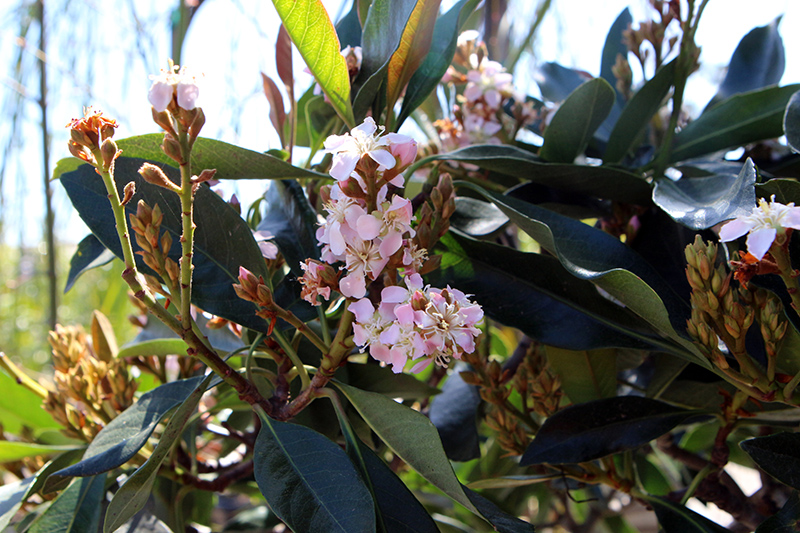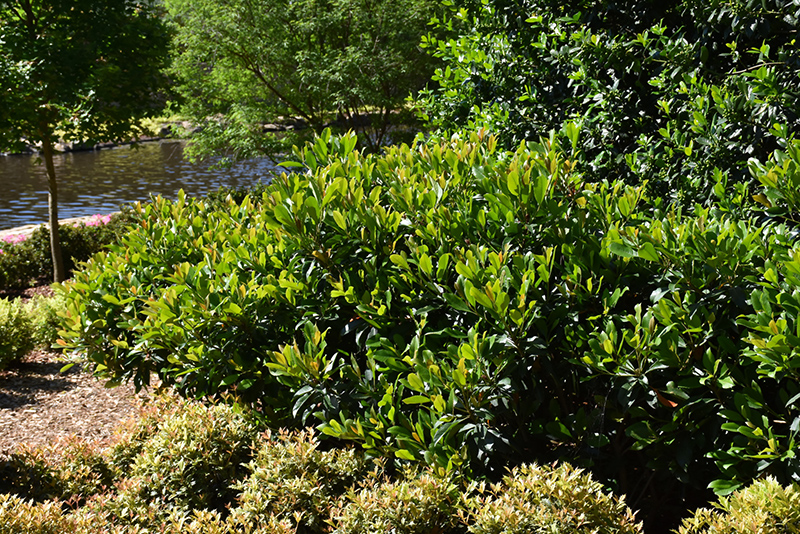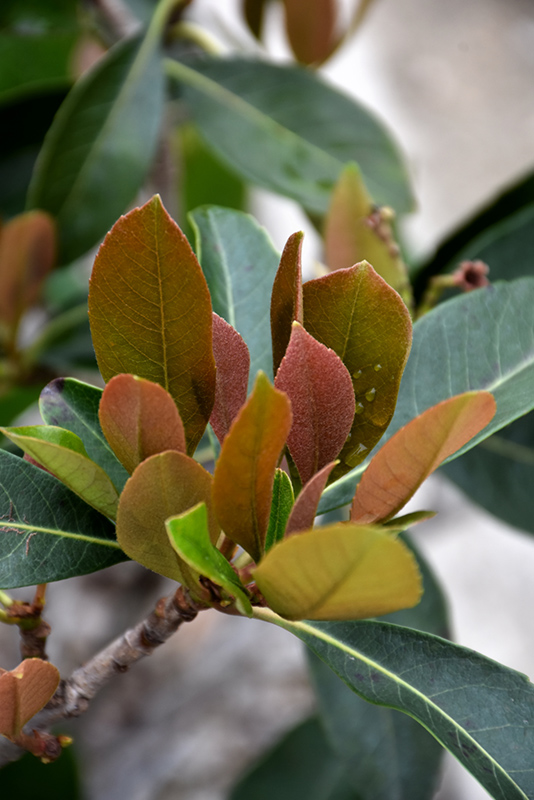Plant Finder
Coppertone Loquat
Eriobotrya japonica 'Coppertone'
Height: 30 feet
Spread: 15 feet
Sunlight:
![]()
![]()
Hardiness Zone: 8
Other Names: Japanese Plum
Description:
A beautiful evergreen tree with copper tinted emerging foliage that matures to deep glossy green; fragrant pink flowers in fall; grown for fruit only in frost free areas; an excellent accent tree that also does well in containers
Edible Qualities
Coppertone Loquat is a medium-sized tree that is commonly grown for its edible qualities, although it does have ornamental merits as well. It produces yellow oval fruit (technically 'pomes') with gold flesh which are typically harvested when mature. The fruits have a sweet taste and a fleshy texture.
The fruit are most often used in the following ways:
- Fresh Eating
- Cooking
- Preserves
Features & Attributes
Coppertone Loquat is clothed in stunning panicles of fragrant pink star-shaped flowers with tan eyes at the ends of the branches from mid to late fall. It has attractive dark green foliage with grayish green undersides which emerges coppery-bronze in spring. The glossy oval leaves are highly ornamental and remain dark green throughout the winter. The fruits are showy yellow pomes carried in abundance from early to late winter. The fruit can be messy if allowed to drop on the lawn or walkways, and may require occasional clean-up. The smooth gray bark adds an interesting dimension to the landscape.
This is a multi-stemmed evergreen tree with an upright spreading habit of growth. Its average texture blends into the landscape, but can be balanced by one or two finer or coarser trees or shrubs for an effective composition. This plant will require occasional maintenance and upkeep, and should only be pruned after flowering to avoid removing any of the current season's flowers. It is a good choice for attracting birds and bees to your yard. It has no significant negative characteristics.
Aside from its primary use as an edible, Coppertone Loquat is sutiable for the following landscape applications;
- Accent
- Shade
- Hedges/Screening
- General Garden Use
- Container Planting
Planting & Growing
Coppertone Loquat will grow to be about 30 feet tall at maturity, with a spread of 15 feet. It has a low canopy with a typical clearance of 2 feet from the ground, and is suitable for planting under power lines. It grows at a medium rate, and under ideal conditions can be expected to live for 40 years or more.
This tree is quite ornamental as well as edible, and is as much at home in a landscape or flower garden as it is in a designated edibles garden. It does best in full sun to partial shade. It is very adaptable to both dry and moist growing conditions, but will not tolerate any standing water. It may require supplemental watering during periods of drought or extended heat. It is not particular as to soil type or pH, and is able to handle environmental salt. It is somewhat tolerant of urban pollution. Consider applying a thick mulch around the root zone in winter to protect it in exposed locations or colder microclimates. This is a selected variety of a species not originally from North America.
Coppertone Loquat is a good choice for the edible garden, but it is also well-suited for use in outdoor pots and containers. Its large size and upright habit of growth lend it for use as a solitary accent, or in a composition surrounded by smaller plants around the base and those that spill over the edges. It is even sizeable enough that it can be grown alone in a suitable container. Note that when grown in a container, it may not perform exactly as indicated on the tag - this is to be expected. Also note that when growing plants in outdoor containers and baskets, they may require more frequent waterings than they would in the yard or garden.



